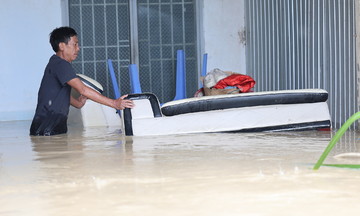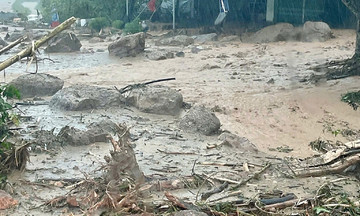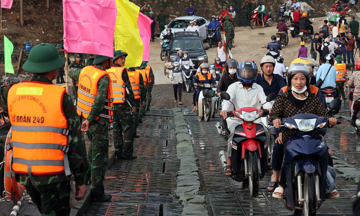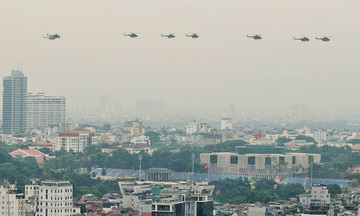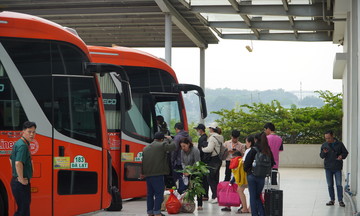Following the Prime Minister's roadmap, starting from July 2026, gasoline-powered motorcycles will be prohibited within Hanoi's first ring road, encompassing central districts such as Hoan Kiem, Ba Dinh, Dong Da, and Hai Ba Trung. This area has a population of over 1 million, with hundreds of thousands commuting daily from surrounding areas and neighboring provinces, resulting in a high density of personal vehicles.
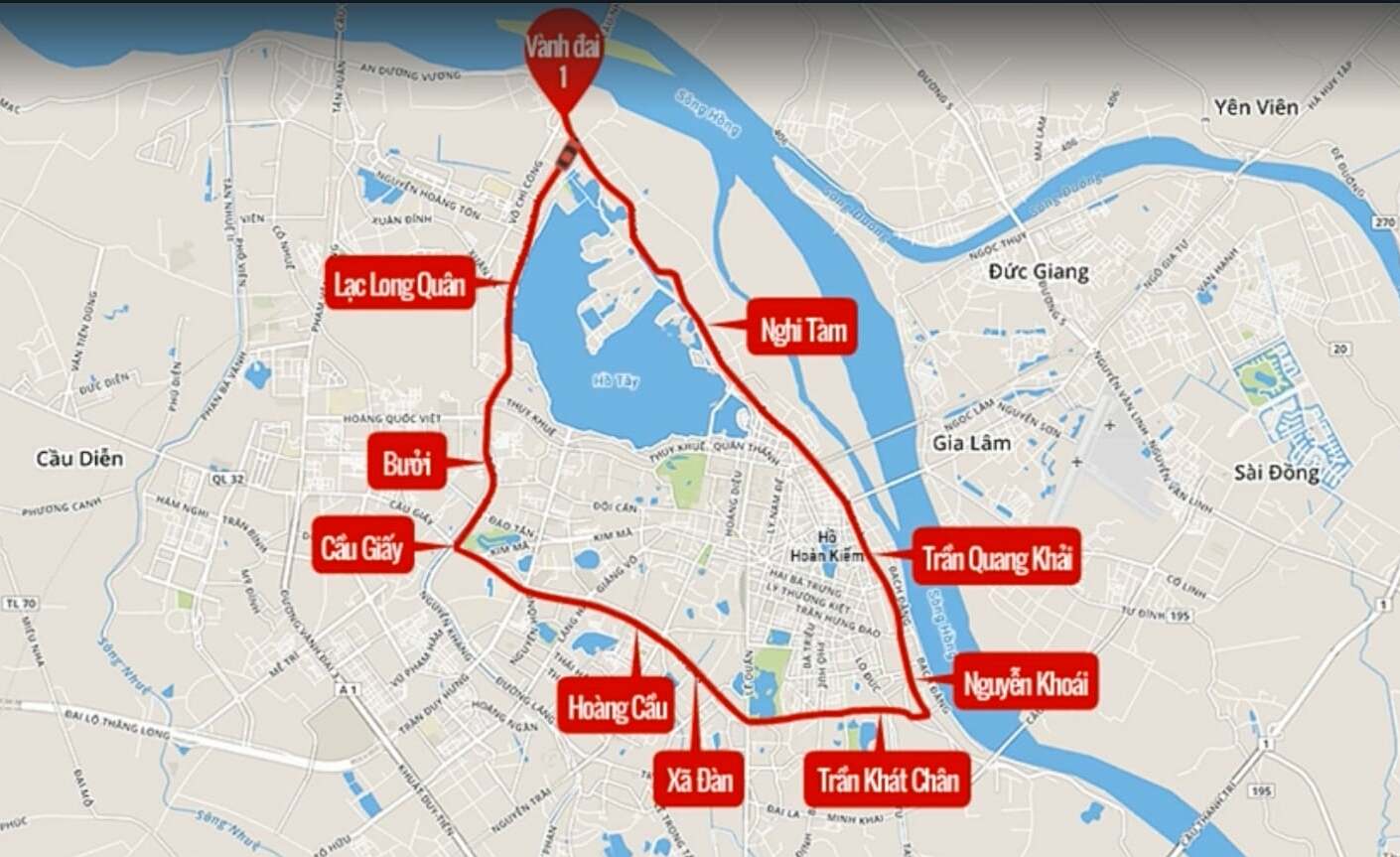 |
Ring Road 1, Hanoi. Graphics: Tien Thanh |
According to Nguyen Van Quyen, Chairman of the Vietnam Automobile Transportation Association, eliminating gasoline motorcycles will improve air quality and reduce urban noise pollution, but will only be effective if viable alternatives are available. With Hanoi's public transport currently meeting only about 19% of travel demand—far below the 30-35% target set for 2025—the ban will create significant pressure without timely supplementary solutions.
Therefore, he suggests the city prioritize increasing the frequency and expanding the bus network and quickly operationalize additional metro lines to enhance mass transit capacity. Additionally, Hanoi should introduce flexible vehicles like 10-12 seat mini electric vehicles, which can operate in narrow alleys for short trips, connecting to main routes.
Dr. Dinh Thi Thanh Binh (University of Transport and Communications) believes the ban will force commuters from surrounding areas to leave their gasoline-powered vehicles at the ring road and switch to other modes of transport. Thus, the city needs to build transfer parking lots in bordering areas, conveniently connected to buses, metro lines, or electric shuttle buses. "Limited land availability will be a major obstacle, requiring synchronous planning and early infrastructure investment," Binh said.
Furthermore, to reduce the number of personal vehicles during peak hours, she suggests the city could collaborate with schools, industrial parks, and large companies to organize transport for students and workers, limiting spontaneous travel demand.
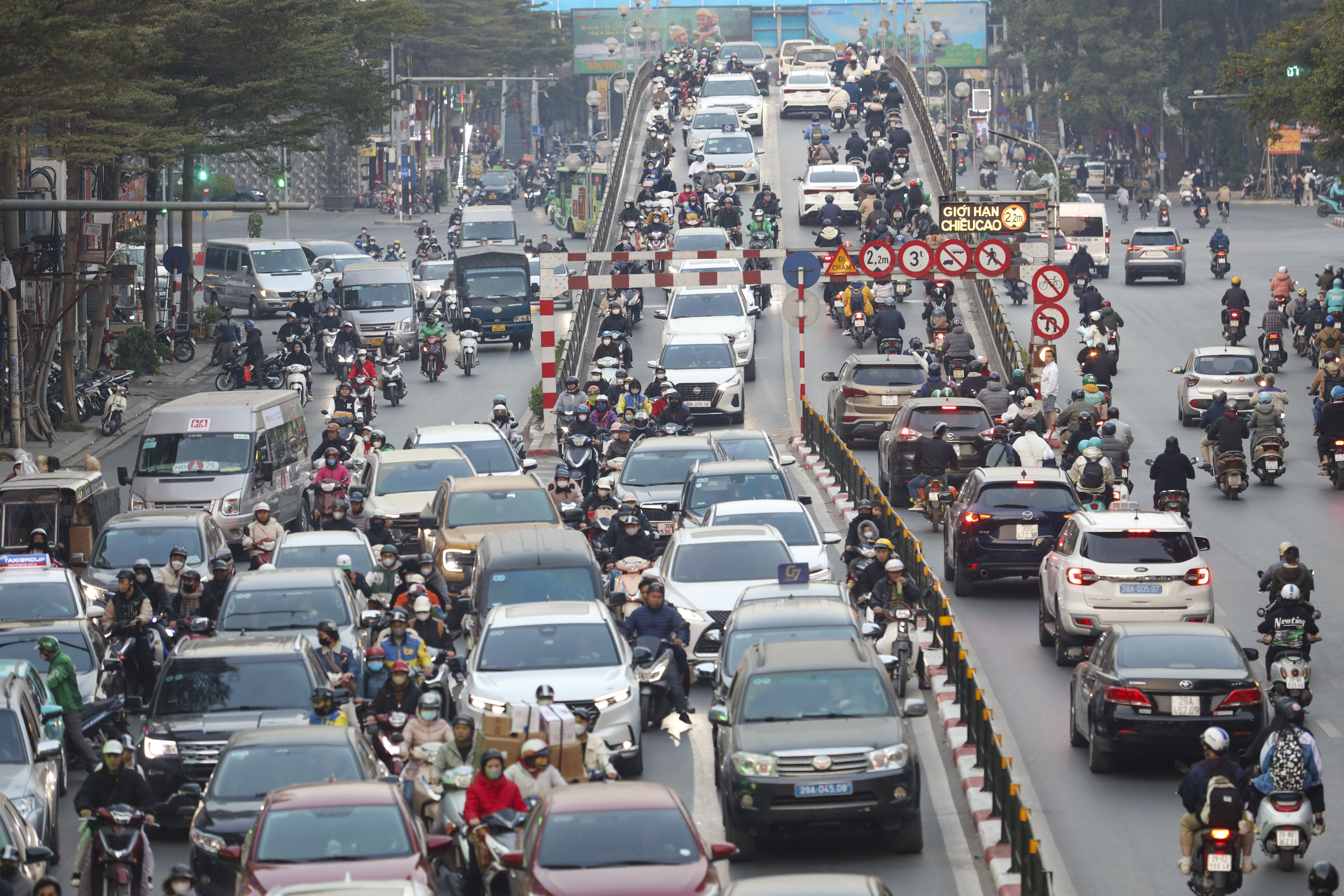 |
Traffic on Son Tay Street, Hanoi. Photo: Ngoc Thanh |
Financial and charging infrastructure support for vehicle transition
According to Nguyen Van Thanh, former Chairman of the Vietnam Automobile Transportation Association, in addition to infrastructure, Hanoi needs to support residents, especially low-income groups, during the vehicle transition.
Firstly, the city needs to survey the number of existing gasoline motorcycles, categorizing them by age and condition to develop appropriate support packages. Newer motorcycles with higher value will receive more support for the switch; older vehicles might not receive support but will be encouraged for trade-in. Support could include partial funding for vehicle replacement or travel subsidies if people switch to public transport.
"Electric vehicle manufacturers should be encouraged to implement trade-in programs and offer discounts, especially for low-income groups," Thanh said. The government could waive registration fees, reduce excise taxes, or subsidize installment interest rates for those purchasing new electric vehicles.
Developing infrastructure for electric vehicles is crucial. Dr. Binh proposes the city build public charging stations at parking lots, residential areas, and shopping centers—similar to current gas stations. To avoid monopolies, Hanoi also needs open charging points supporting various vehicle models, ensuring competitiveness and convenience.
Safety standards for residential charging and guidelines for proper charger use are necessary to prevent fire hazards. The city and businesses also need solutions for collecting and processing used batteries to avoid secondary pollution.
Experts believe that to prevent social disruption, Hanoi needs to announce a clear implementation roadmap, specifying the timeline for banning electric motorcycles if applicable, to help residents prepare. There must also be comprehensive support mechanisms for both residents and clean energy vehicle manufacturers, creating a sustainable and feasible transport ecosystem.
Hanoi currently has over 9.2 million vehicles, of which 8 million are managed by the city, including 1.1 million cars and 6.9 million motorcycles; approximately 1.2 million vehicles from other provinces regularly circulate within the city.
Doan Loan



